Read our comprehensive guide on choosing the best kayak for fly fishing. We've also reviewed some top rated fly fishing kayaks for you.
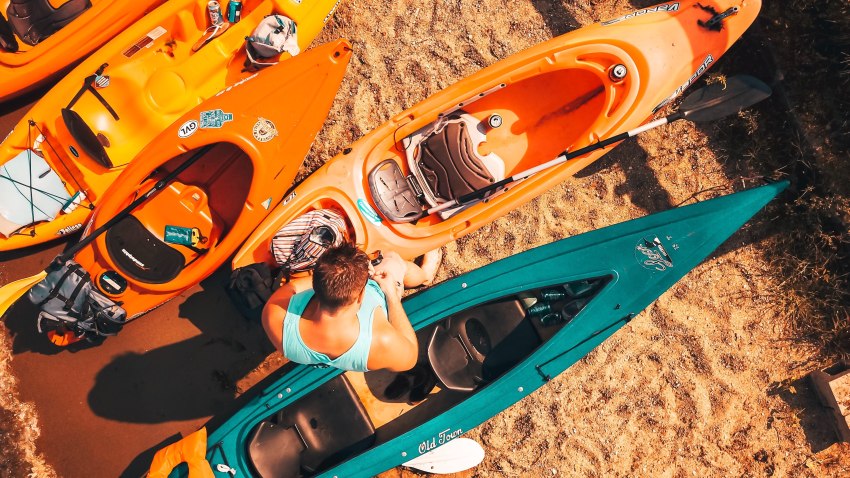
You have been listening to your friends talk about how much fun they have kayaking and now you think it might be something you want to try. You head to the nearest sporting goods store to buy a kayak and head to the nearest body of water. You walk in and suddenly face hundreds of kayaks in all shapes and sizes. Now you are wondering, “What size kayak do I need?”
The right kayak for your height is one that offers enough legroom and volume but is not too large to transport and store. Also important for comfort are the cockpit size and adjustable footrests. A 12-foot-long kayak is a sweet spot for most average-sized people.
In this article, we’ve got all the information that you need to decide on the optimal kayak size. By the time you finish reading this guide, you will be discussing kayak size like a pro.
Kayak Dimensions: Why Size Matters
There is a reason why kayaks come in different lengths and widths. Each one has a different purpose and handles differently when it’s in the water.
Length: Longer kayaks are usually faster
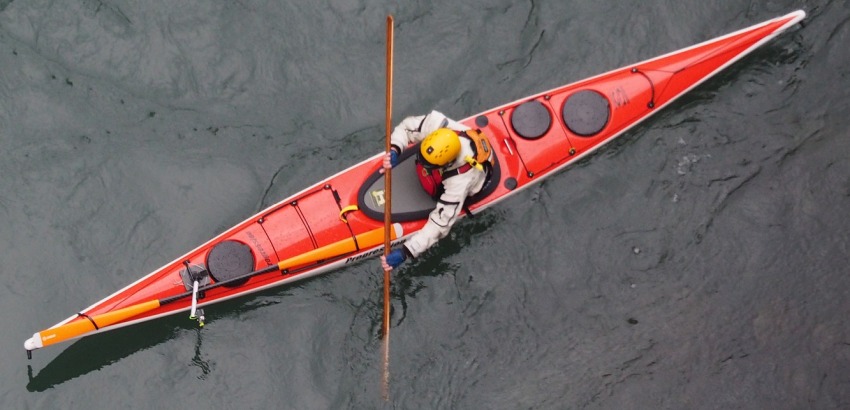
The length of a kayak is the measurement of the bow to stern. The length of a single-person kayak measures anywhere from 8 feet to 16 feet.
A shorter kayak is easier to maneuver in the water, and they are usually more stable. A longer kayak is more difficult to turn, but it moves faster, and you can easily cover more distance.
Width (aka beam): Are wider kayaks more stable?
The width of a kayak helps to determine the kayak’s stability. Typically, a wider kayak is more stable. When comparing kayak stability, it’s also important to know the difference between primary and secondary stability and which one you should be concerned about when choosing your kayak.
Also, by knowing the kayak’s length and beam, you can determine the length to beam ratio by dividing the kayak’s overall length by its width. A higher ratio means the kayak will be faster in the water. A lower number means you lose the speed but gain stability. A racing kayak will have a higher ratio, while a recreational kayak will have a lower one.
Finally, the width of the kayak is important for selecting the correct paddle length. See our paddle sizing guide.
Cockpit Size: Make sure you fit in
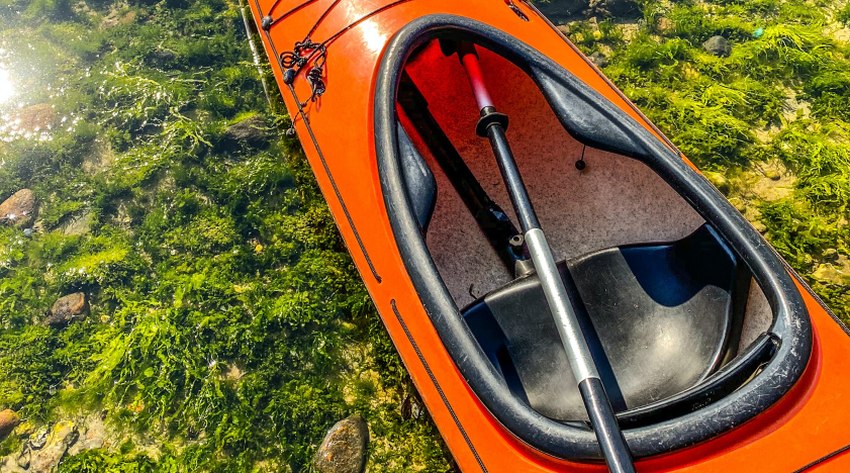
You only need to worry about the size of the cockpit opening if you are getting a sit-in kayak. There are a variety of sizes, and most of them are oval. You want an opening that is long enough for you to get in and out without constantly banging your knees. Additionally, if you are wider in the thighs and hips, you will want an opening that will allow you to slide in and get out easily with your PFD on.
Volume: Important for weight capacity
The kayak’s length, width, and hull design determine its volume. The volume of the kayak is how much room is inside the kayak. It is sometimes confusing because kayak volume may be referred to in gallons or cubic feet. Manufacturers will refer to kayaks as having low, medium, or high volume. Here is what those terms mean:
Low: low volume kayaks will have a smaller cockpit area. The kayak will be easier to steer and is better suited for a smaller person under 5’6” and 140 pounds.
Medium: a medium volume kayak is a good, general-purpose kayak. It will hold a person of average height and under 190 pounds.
High: high volume kayaks have spacious cockpits and are better suited for someone who is over 5’10” and 190 pounds. Because high-volume kayaks are so much roomier, it may be difficult for a smaller person to maneuver and control.
Weight Capacity: Can the kayak hold enough weight?
When determining what size kayak to get, you will want to also look at the weight capacity. The maximum weight capacity is the total weight that a kayak can carry, including the kayaker’s weight and all the kayaker’s gear.
Another essential factor to consider is performance capacity, which is where your kayak will give you optimal performance. Performance capacity is about 70% of a kayak’s maximum weight limit. For example, if you have a kayak with a maximum weight capacity of 500 pounds, then you and your gear should weigh no more than 350 pounds (500 * 0.7).
Transportation and Storage: How will you haul it?
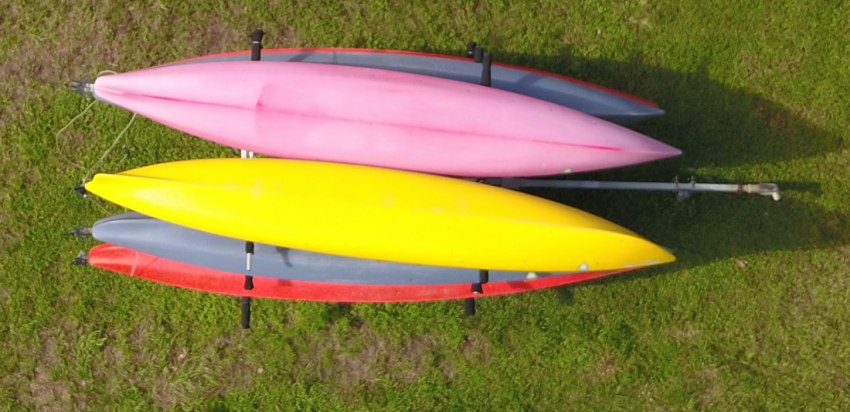
Two things people tend to overlook is how they are going to transport and store their kayak. These factors aren’t so much of an issue if you have a pick-up truck or a kayak trailer and live in a house with plenty of storage. But, if you live in a small studio apartment and drive a Fiat 500, then a 16’ sea kayak is not a good option.
Also, if you have a roof rack carrier, you need to have a kayak that is light enough to lift or you may want to invest in a kayak lift system.
Types of Kayaks: Different Boats for Different Floats
Why do kayaks come in different lengths, widths, volumes, and weight capacities? It’s because there are a variety of reasons why people use kayaks. You should have a specific purpose in mind when shopping for a kayak because it will guide your decision. Let’s look at some of the different types of kayaks available, their purpose, and their average size.
Recreational Kayaks: 10 to 12 ft
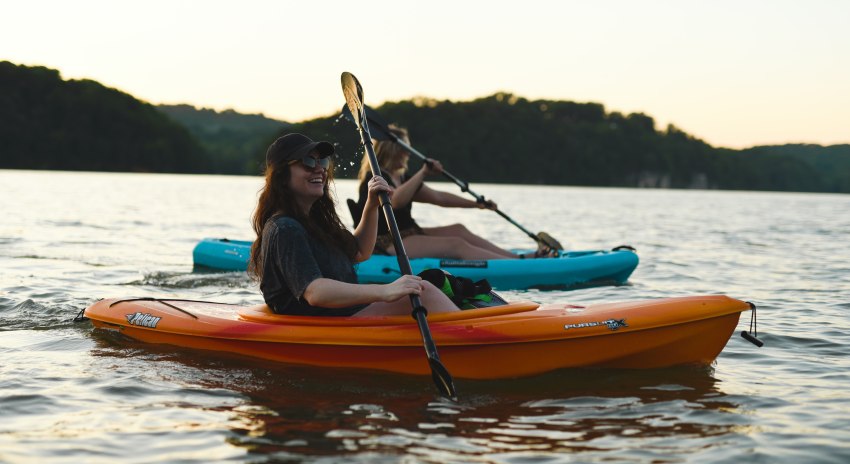
A recreational kayak is for just what its name implies. This type of kayak is ideal for an afternoon float down a lazy, slow-moving river or spending a few hours paddling around a lake. They are easy to use and prioritize primary stability. These types of kayaks are typically 10 to 12 feet long and have a wider beam. They are lighter and relatively easy to transport and store. Kayaks shorter than 10 ft are usually meant for kids or small paddlers.
Fishing Kayaks: 10 to 14 ft
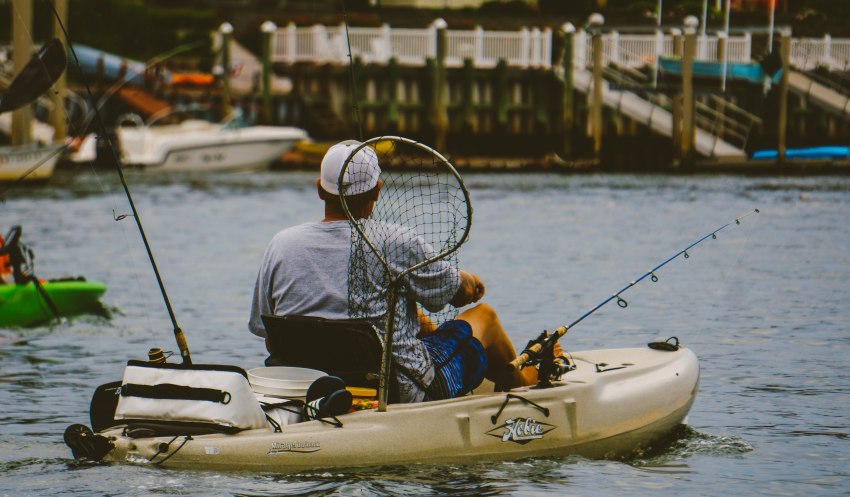
Fishing kayaks are usually wider than recreational kayaks. Fishing kayaks prioritize stability, so they don’t tip when you stand up to cast your line or reel in your big catch. They also have more weight capacity to carry all the fishing gear you have with you.
Touring/Sea Kayaks: 12 to 20 ft
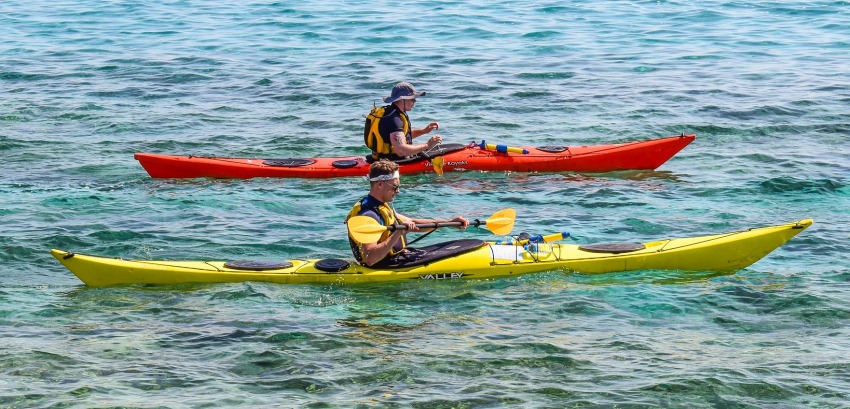
Touring kayaks are long and narrow. You may also hear touring kayaks referred to as sea kayaks and ocean kayaks. They are designed to cover long distances and cut through waves. They also have plenty of storage in the cockpit so that you can pack lots of gear. Touring kayaks are usually between 12 to 20 feet long.
Racing Kayaks: 17 ft maximum
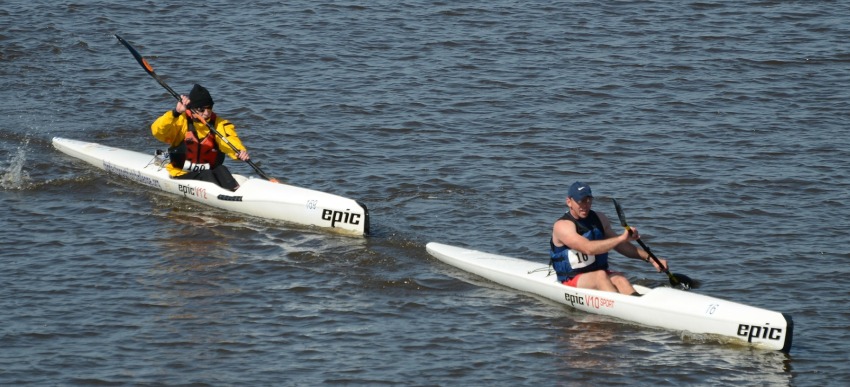
Racing kayaks will have a high length-to-width ratio. They are built for speed, so they are lightweight and long. A single person racing kayak will measure about 17 feet long, and since their sole purpose is racing, there is really no room for storage in the cockpit.
Whitewater Kayaks: Less than 8 ft
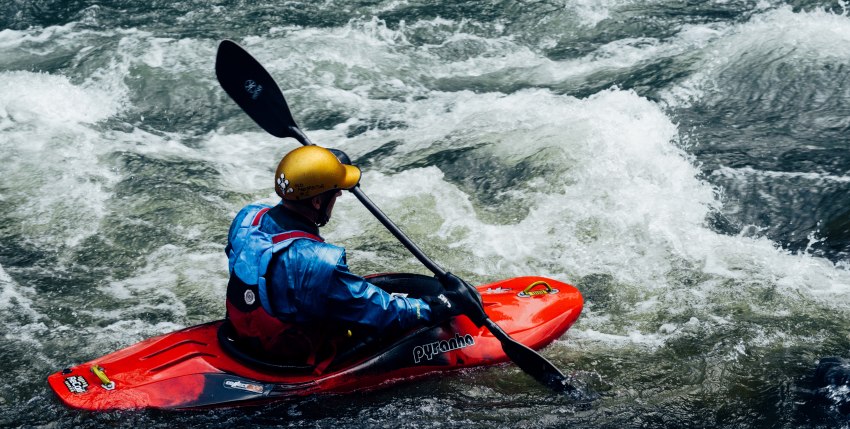
Whitewater kayaks are shorter, so you can quickly turn when you are maneuvering down fast-moving rapids. If whitewater kayaking is your thing, keep in mind that you will get wet, and water-soaked clothing will increase your weight by about 15 pounds.
There are different types of whitewater kayaks, such as playboats, creekers, and river runners. Play boats are the shortest of the three and are meant for doing jumps and other tricks on the water. Creek boats are the longest, designed for fast charging over the rapids. River runners are a combination of the two types that offer good speed and maneuverability.
Tandem Kayaks: 10 to 14 ft
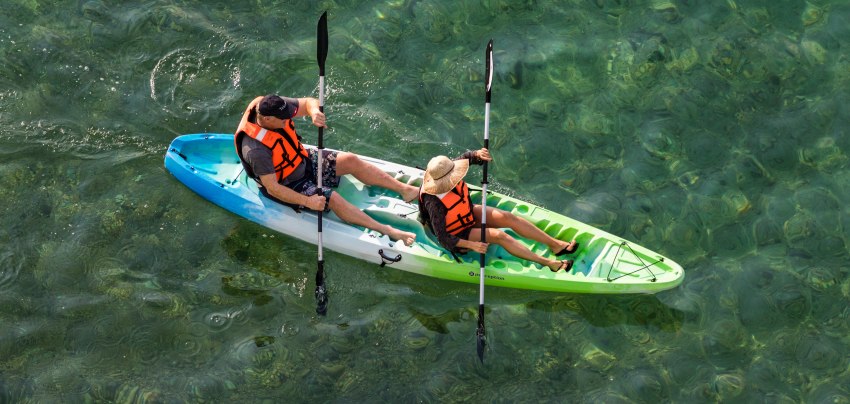
Tandem kayaks are designed for two people, so they will be longer and have added space inside the cockpit. Except for whitewater kayaks, all the other types are available as single or double.
Inflatable Kayaks
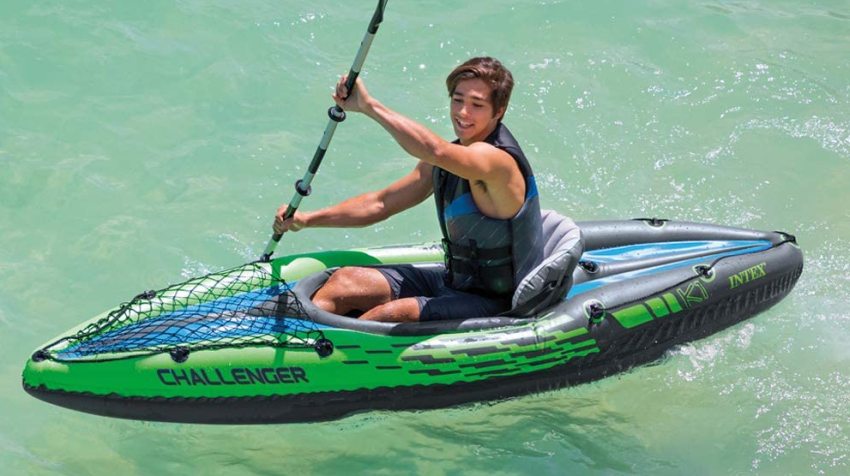
There are several types of inflatable kayaks on the market. They have a durable build and can suit almost any sort of kayaking you plan on doing. You can buy an inflatable kayak for whitewater, recreation, fishing, touring, or tandem kayaking. Inflatable kayaks take up very little space and are transported easily. So, if you want a long kayak but live in a small apartment and drive a Fiat 500, then an inflatable kayak is the way to go.
Your Size Matters, too
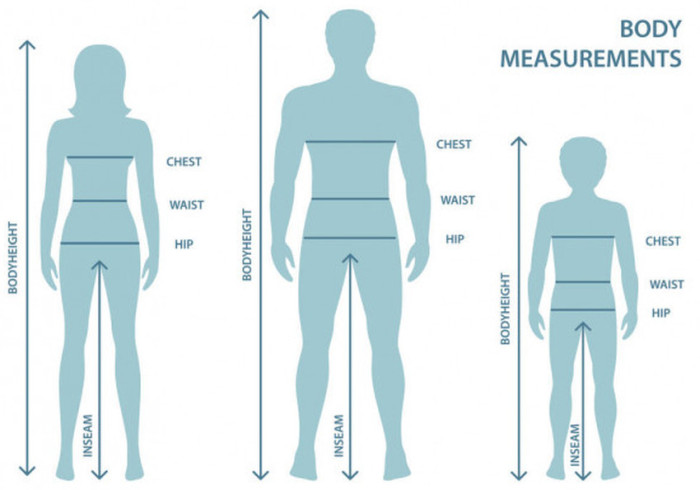
You know what types of kayaks are available and how a kayak’s physical dimensions affect its performance. Now it’s time to look at you. How does your size affect which type of kayak you buy? Let’s take a look.
Your Height
Overall, a longer kayak will be better for a tall person. Height is not a significant factor for sit-on kayaks, but there are some things to consider when looking at sit-in kayaks.
Taller people have a higher center of gravity, so they may feel less stable when sitting in the kayak. Looking for a kayak with a deep seat area may provide better stability. And, if you are considering a sit-on kayak, you can counteract the higher center of gravity with a kayak with a low deck height.
Even a short trip down the creek can seem long if you don’t have a comfortable backrest. Make sure that the backrest is high enough for back and shoulder support.
Your Weight
We discussed earlier how kayaks have maximum capacity and performance capacity. Some people like to take a lot of supplies when they are out on the water. Even if you aren’t looking for a fast kayak or whitewater kayak, you don’t want to exceed the kayak’s weight capacity.
For more information on how to choose the right kayak for your weight, read our post here.
Other Physical Factors to Consider
Leg length – Sit-in kayaks have foot pegs for resting your feet. If you have long legs, you might find yourself in an uncomfortable position. You should also be able to stretch out your legs comfortably. Additionally, you will want some clearance in the hull if you have big feet, so your feet aren’t being scrunched. Sit-on kayaks are a little more lenient when it comes to foot and leg length.
FAQ’s
Yes. But you will want to look for a kayak that’s at least 12 feet long and has high volume. That way, you can be sure that you will have plenty of room to stretch out your legs. You will also have space for any extra gear you pack.
Yes. Most recreational kayaks come in shorter lengths. And, even if you don’t plan on going over any rapids, whitewater playboats come in shorter sizes. You will want a kayak that is low volume. Anything larger may be too difficult to steer.
While sit-on-kayaks are more forgiving as far as overall height and leg length, you will still want to consider your weight. Additionally, if you are tall, you will want a kayak with a low deck to compensate for your natural higher level of gravity.
That would make life a lot easier. Unfortunately, there isn’t a kayak that will handle all types of water, whether it is ocean waves, a calm lake, or a quick-moving river. And, there isn’t a kayak that is ideally suited for all body types.
Conclusion
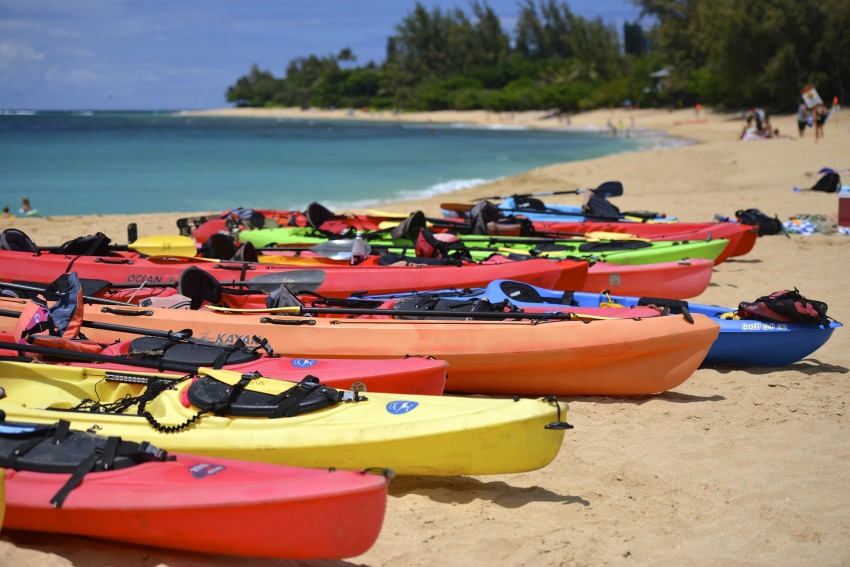
Looking for the perfect kayak can be challenging. You go into a store thinking you know exactly what you want, only to be faced with multiple choices of length, width, sit-on-top, or sit-in. Your options can feel overwhelming.
By following our recommendations, you will be able to find the kayak that is perfect for you. Can you think of anything we forgot? Be sure to let us know in the comments. Happy paddles!









